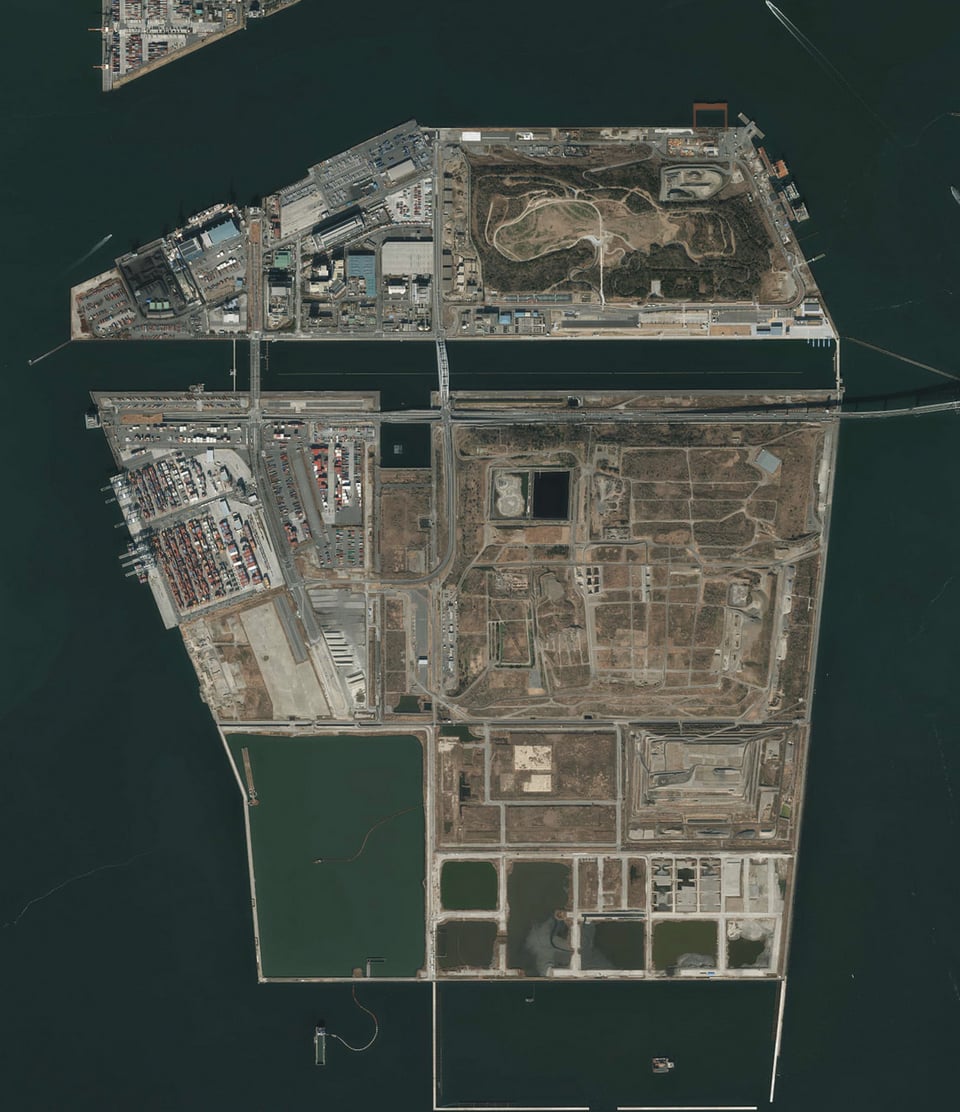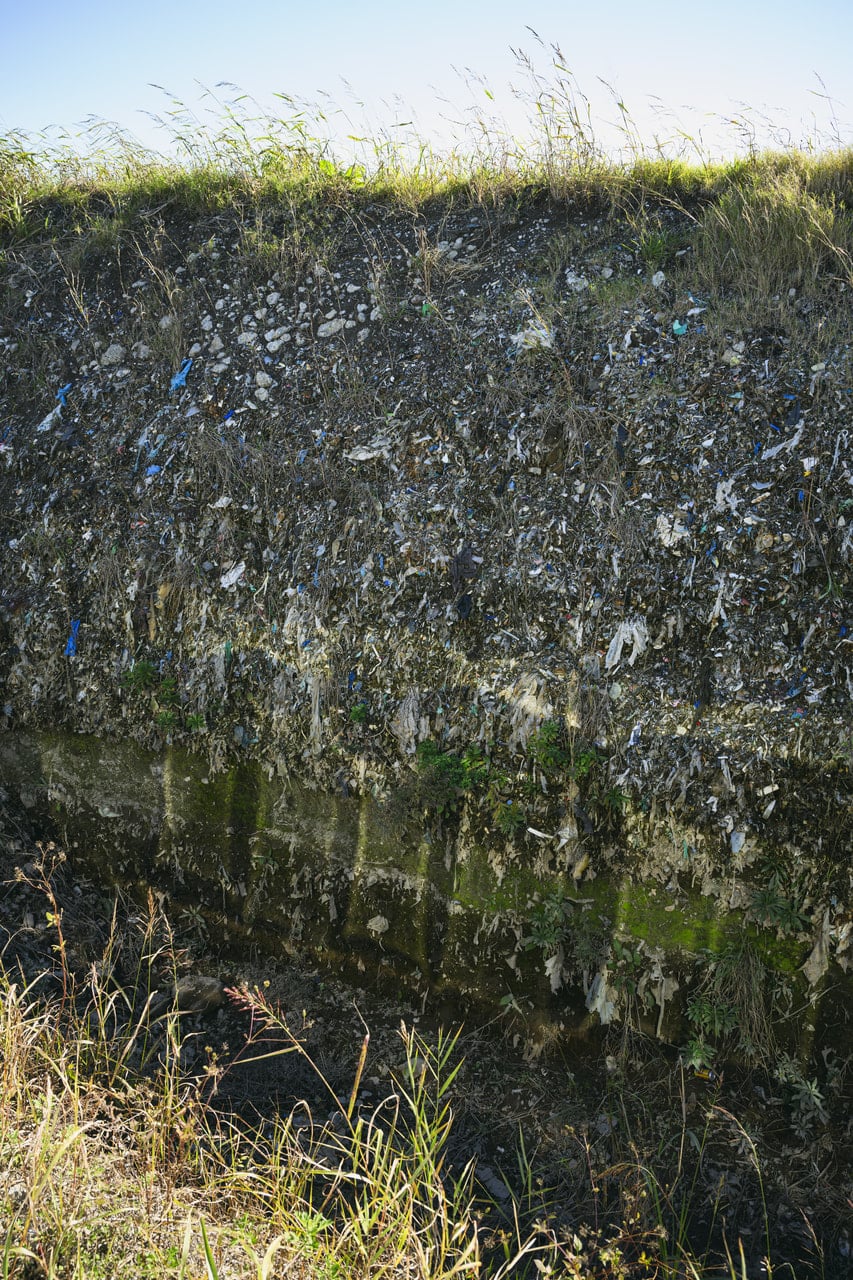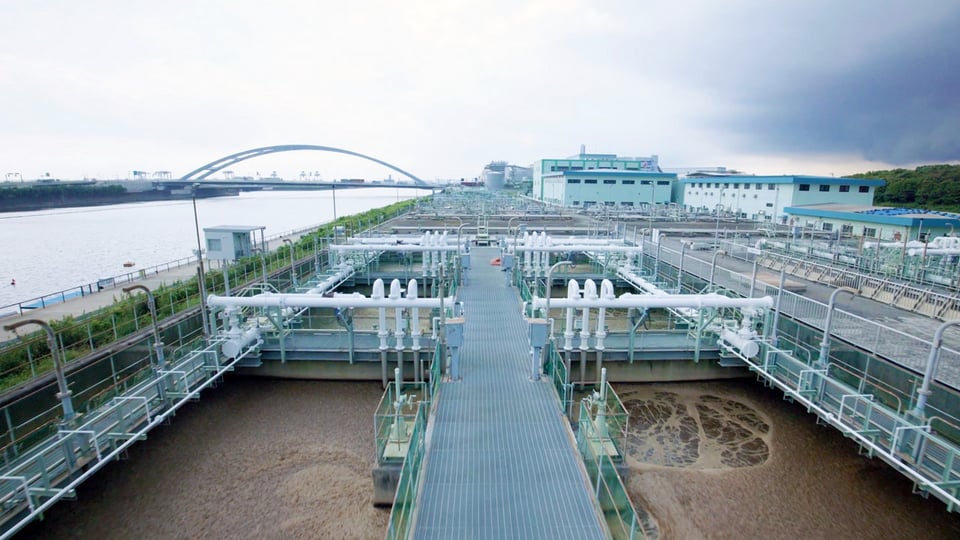
March 31, 2025
Tokyo Waste Management Policies: Prolonging the Lifespan of Tokyo Bay’s Final Landfill Site and Reducing Environmental Impact
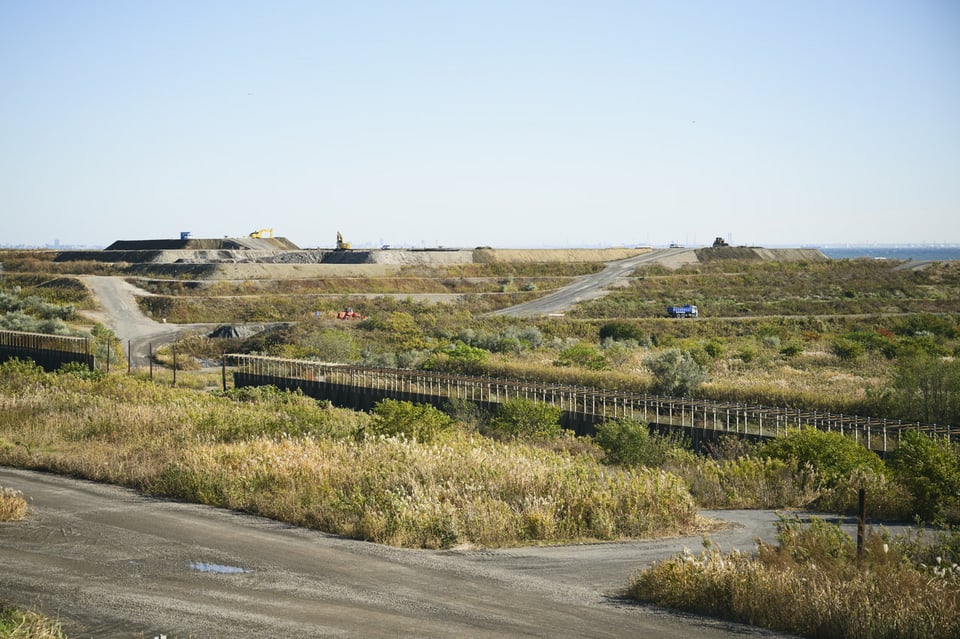
Tokyo Bay’s Central Breakwater Outer Landfill Site spans 199 hectares. In use since 1977, it remains operational today.
Waste management is inseparable from large cities. Currently, the predominant waste disposal methods are landfilling (36.7%), open dumping (33%), and recycling (13%), with each city facing challenges in landfill operation and waste recycling.*1 In major, rapidly growing Asian cities like Jakarta *2 and Dhaka, increasing waste volumes are met with shortages in funding, technology, and personnel to establish and operate intermediate treatment and recycling facilities. As a result, landfilling often occurs without adequate sorting, leading to environmental pollution and low recycling rates. *3 In the Tokyo metropolitan area, waste management follows a structured process involving waste separation in cooperation with municipalities, incineration and crushing at intermediate treatment facilities, and landfilling at the final landfill site.
As of 2024, the only operational landfill is commonly referred to as the Tokyo Metropolitan Government Landfill Site, which accepts waste from 23 wards in central Tokyo. The upper section of the image below is known as the Central Breakwater Inner Landfill Site, while the lower section comprises the Central Breakwater Outer Landfill Site and the New Sea Surface Landfill Site. The New Sea Surface Landfill Site is the last available landfill site within Tokyo Bay, making its prolonged usability a top priority for the city’s waste management strategy.
The Landfilling in Tokyo
In Tokyo, the amount of garbage increased due to the growth of the urban population from around the middle of the Meiji period(1868-1912), and the city faced major challenges in its disposal and sanitation environment. Although the city also used inland landfills, securing land eventually became difficult, and by the latter half of the 20th century, marine landfills became the mainstream approach.
In 1957, landfilling of garbage began at “Yumenoshima” (Shiomi 14, Koto-ku, Tokyo). However, since garbage such as raw garbage was landfilled as it was, flies and rats were generated in large numbers, which became a social problem.
When landfilling at the Central Breakwater Outer Landfill Site—in operation to this day—began in 1977, concerns over landfill capacity shortages became apparent. Reducing landfill volume and prolonging landfill lifespan became key policy goals, accelerating the rapid construction of intermediate treatment facilities such as incineration plants and shredding facilities for bulky waste.
Prolonging Landfill Lifespan Through Sorting and Intermediate Treatment
To prolong landfill usability, Tokyo has consistently focused on rigorous waste sorting and intermediate treatment, including shredding and incineration.
Intermediate treatment facilities are operated by the Clean Association of TOKYO 23, a joint entity established to manage waste processing across the Tokyo metropolitan area’s 23 constituent cities. Combustible waste is incinerated in an environmentally responsible manner, reducing its volume to approximately one-twentieth of the original. Non-combustible and bulky waste is shredded at specialized facilities, where valuable materials like metals are recovered before final disposal. Tokyo’s waste management operates through collaboration between city offices responsible for sorting and collection, the Clean Association of TOKYO 23 managing intermediate treatment, and TMG operating final landfill operations. All three entities work together under the 3Rs (Reduce, Reuse, Recycle) principle to ensure sustainable waste management.
Environmentally Conscious Landfilling
The landfill process at final landfill sites incorporates measures to minimize environmental impact. Waste is systematically placed in designated areas based on type and is buried using the Sandwich Method, in which every three meters of waste is covered with a 50-centimeter layer of soil, with the process continuing until the landfill reaches a height of 30 meters. By alternating waste and soil layers, this method prevents waste dispersal, odors, pest infestations, and fire hazards, ensuring sanitary landfill.
Landfill gas is also utilized efficiently. Organic waste that was previously buried without incineration continues to generate methane gas—a greenhouse gas 25 times more potent than carbon dioxide—through microbial decomposition. A gas utilization facility collects and burns methane to generate biomass electrical power, offsetting approximately 10% of the TMG Landfill Site’s power consumption.

Gas utilization facility visited by overseas city officials participating in G-NETS (November 2024).
Preventing Marine Pollution from Leachate
Post-landfill environmental protection is crucial, with a major turning point occurring in 1972 when the Waste Management Law was revised, making leachate treatment mandatory. Leachate is contaminated water that forms when rainwater passes through landfill waste layers, absorbing organic pollutants. If left untreated, it can pollute surrounding marine areas.
To prevent this, landfill sites are legally required to install leachate treatment facilities. Leachate treatment follows a strict process. First, leachate is collected in drainage basins before being sent to equalization tanks to balance water quality. It is then sent to a leachate treatment facility where it is treated to meet sewage standards before being discharged into the sewerage system. Additionally, landfill perimeter embankments are regularly monitored for any potential leakage.
Key Findings and Conclusions
In fiscal year 2023, approximately 260,000 tons of waste (about 830 tons per day) were landfilled at the TMG Landfill Site. Thanks to the ongoing waste reduction and recycling efforts, landfill disposal volumes in Tokyo continue to decline. This success has drawn international interest, leading to a G-NETS working group joint project in November 2024, where officials from seven global cities visited Tokyo’s landfill and recycling facilities.
However, challenges remain. Tokyo’s 2024 recycling rate stands at 25.6%, still short of the 37% target set for 2030. The looming issue of landfill shortages remains unresolved, making further waste reduction and resource recovery crucial—a shared challenge among many global cities.
A municipal official from Kuala Lumpur noted, “Despite encouraging residents to recycle, our recycling rate remains below 10%. With food waste making up nearly half of our waste, we have much to learn from Tokyo’s food waste processing technologies.” Meanwhile, a Buenos Aires official observed, “In Argentina, waste management and utilization often face challenges in coordination between state governments and private companies. Tokyo’s model of public-private collaboration is particularly insightful.”
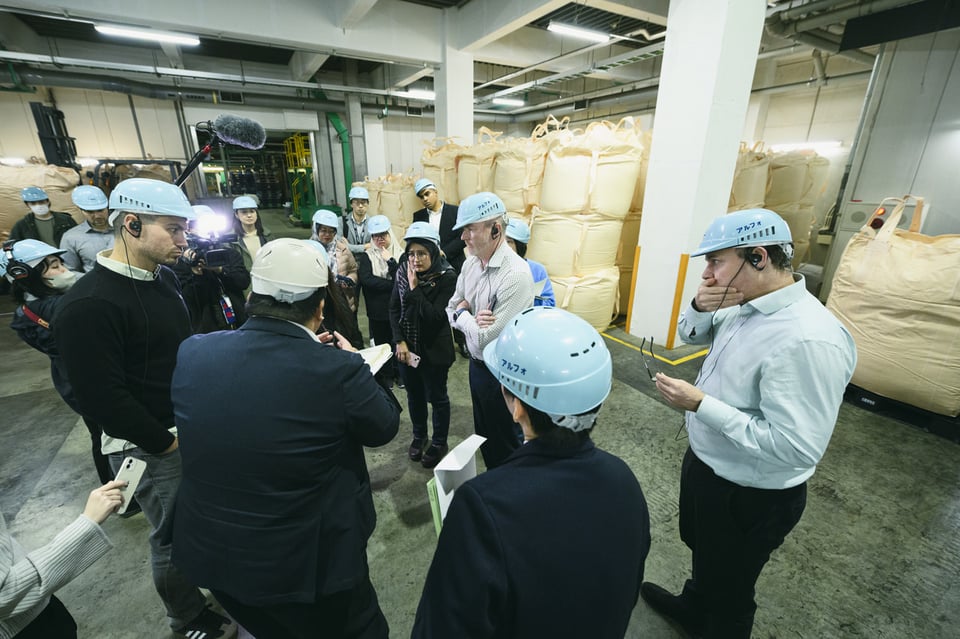
Overseas city officials participating in the G-NETS site visit receive a briefing at Tokyo Super Eco Town, a recycling facility hub in Tokyo’s coastal area (November 2024).
“As long as waste remains mixed, it is garbage. But when properly separated, it becomes a resource,” remarked a TMG Bureau of Environment official to the visiting delegation. As Tokyo continues collaborating with international cities, prolonging landfill lifespan will require further private-sector partnerships and increased recycling efforts. Future solutions may involve startups developing new technologies and knowledge-sharing with other cities, among other diverse problem-solving approaches to find solutions to this issue.
*1 World Bank What a Waste 2.0: A Global Snapshot of Solid Waste Management to 2050
*2 Ministry of Economy, Trade and Industry (METI) Research Project on the Asian Circular Economy Model 2021
*3 JETRO Survey on the Circular Economy in Major Countries of Asia and Oceania 2024
